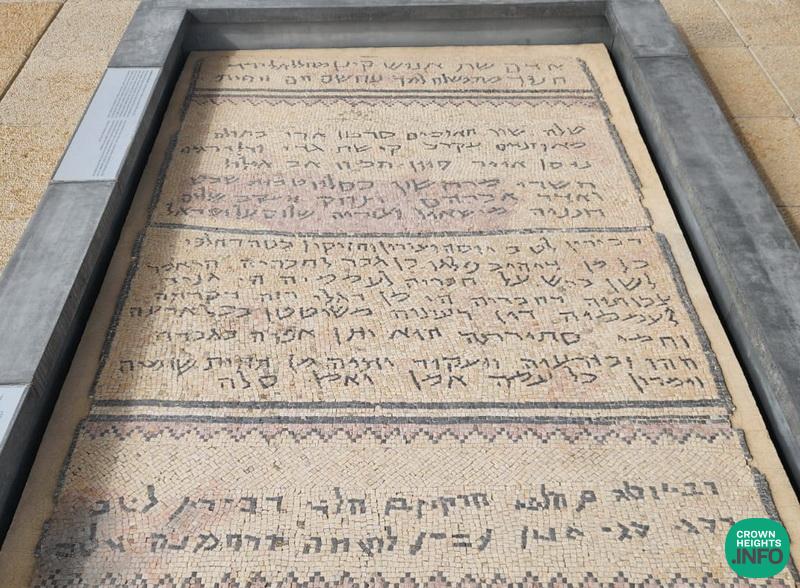
Buildings In The Desert, and A Curse Written Into A Synagogue Mosaic In Ein Gedi
“The Kings of Israel are only anointed with persimmon (balsam) anointing oil,” wrote Rambam, the renowned twelfth-century Jewish scholar Moses ben Maimon.
In the course of a survey of the Judean Desert carried out a few years ago by the Israel Antiquities Authority, the Ministry of Heritage, and the Civil Administration Staff Officer for Archaeology in Judea and Samaria, a group of buildings dating to the last days of the Kingdom of Judah was discovered alongside the road ascending from Ein Gedi to the Judean Mountain ridge and the major cities of Hebron and Jerusalem.
Saar Ganor, Israel Antiquities Authority archaeologist and researcher of the First Temple period proposes that these buildings may have safeguarded the route along which convoys transported the coveted expensive persimmon perfume.
The persimmon (or balsam) perfume is identified as “tzori”, cited in the Jewish sources as one of the fragrances composing the incense burned in the Temple. “The buildings constructed alongside the road provide additional evidence that the persimmon trade was controlled nationally and was already a source of income towards the end of the First Temple Period,” says Ganor. The persimmon plant continued to be cultivated, and its fragrance continued to be produced at Ein Gedi in the Hasmonean, Roman, and Byzantine periods.
Many ancient written sources praise the qualities of the persimmon perfume, which was one of the most expensive products in the ancient world, used for incense, perfume, medicine, and other purposes. Of course, it is not the persimmon fruit that we know today, which originated in China. It is recounted, for example, that Mark Anthony granted Queen Cleopatra control over the tzori persimmon plantations as a token of his love. The later Roman emperors used to acquire persimmon products from Ein Gedi.
In the early 1970s, during the excavation of the ancient Byzantine synagogue at Ein Gedi, Hebrew University archaeologists uncovered a mosaic floor featuring Hebrew and Aramaic inscriptions. One Aramaic inscription was a warning – a serious curse: “…He who reveals the secret of the town to gentiles, he whose eyes roam throughout the earth and see what is concealed, may He turn His face upon that man and his offspring, and uproot him from under the heavens…”
So, what was the mysterious secret of Ein Gedi? And why did this curse appear in the synagogue mosaic?
Professor Saul Lieberman and subsequent scholars believed the “secret” was the cultivation techniques and/or the recipe for producing the persimmon perfume. “It seems that the threat was effective, and the secret was so well kept that the production methods and the plant from which the perfume was processed remain unknown to this day,” says Ganor. “The ancient synagogue at Ein Gedi was the gathering place for the Jewish community of Ein Gedi and for the persimmon cultivators and producers, thus explaining the appearance of the curse in this specific location. Following the Muslim conquest of the country in the 8th century CE, and the access to the markets of Arabia, the production of the persimmon perfume became less profitable, and its secret has remained a mystery.”















